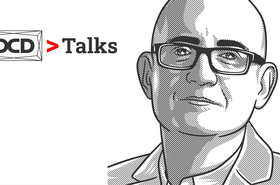In this DCD>Talk, filmed at our London DCD>Connect event, Alex Dickens spoke to Ian Wilcoxson of Kohler about the techniques that companies are employing to ensure data centers are as resilient as possible. After all, as he reminds us, Kohler has a long history in this field:
“We're designing and deploying data equipment in data centers with the local situation in mind. We've been doing this for 150 years. In the way that they do in the generator world, we're always talking about n plus one.
"Your load is the add, and then you decide whether you want plus one. You've got the spare capacity of one generator so if you want to go, plus two, it depends on how you design the system as to how you share that extra capacity”
Wilcoxson is a champion of HVO - Hydrotreated Vegetable Oil, as a replacement for diesel in backup generators, and there’s a strong argument that, for right now, they could be the green solution we’ve been looking for:
“People will always say there's no single answer. I think we know that batteries don't scale. Hydrogen is interesting but I think we have to remember hydrogen is made from natural gas. Yes, of course, the tailpipe emissions from a gas engine are less, but, until there's this green hydrogen available, I think you're just kind of moving the problem. In a sense, you're not solving the problem. There are lots of advantages to biodiesel, we've been pushing HVO for two years and we want our customers to drop diesel where HVO is available.”
It may sound crazy, but for the amount of time that they’re being run, a biodiesel engine could be one of the greenest forms of energy available - Wilcoxson thinks of it in terms of a battery, offering potential energy:
“You're not physically storing energy, but if you think about a biodiesel generator, it is in standby mode. Its greenhouse gas impact and standby mode are virtually insignificant. It requires a small amount of power to heat the engine to keep it at an optimal temperature and that doesn't have to come from electricity, we can take that directly from the data center, a little bit of waste heat. We put that into a small heat exchanger. We can stow it on standby. It's virtually nothing. And then within 15 or 20 seconds, that bank has generators that can be providing their full power.”
Wilcoxson goes on to explain the pressure on companies like Kohler to keep finding new paths to resilience:
“There's always space pressure, And, clients want to optimize the way that they operate engines. They just want us to become as efficient as possible and help them design the most efficient system that we possibly can. The one that scales. The one that can be deployed in as small chunks as possible. And I guess the other thing that they want, is they want repeatability. They want to know that they're on a journey.”
To hear more about Wilcoxson’s vision for the future of data center power provision, you can listen to the whole talk here.

